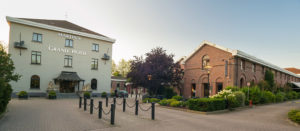

For some decades now, we have known that many of the bodies of the dead at Waterloo were stripped and buried in long shallow mass graves, with a few possibly also being burnt alongside the horse carcasses. However, it has also been realised for a very long time that the mass graves have been emptied, as on many other Napoleonic battlefields across Europe.
It has been clear that much bone was extracted from these sites for crushing to make fertiliser and a number of newspapers in the North of England in the late 1820’s descried this practise and it stopped. However research amongst Belgian, French and German newspapers have revealed another use for bone at this time – and many of the corpses of Waterloo and other battles were quietly used for this purpose in the full knowledge of their governments.
During the Napoleonic wars, the French empire was cut off from supplies of sugar from the West Indies and Napoleon had heavily promoted the growth of sugar beet as an alternative source of sugar. However, beet does not naturally produce a nice white sugar, which people wanted. How to achieve white sugar?
It was discovered that if sugar beet was filtered through a layer of bone ash it would become nice and white, and where to get bone ash aplenty? Use the bones in the mass graves and burn them to ash!
Where was the beet sugar factory in Waterloo? Well part of it is now the Martin’s Grand Hotel at Waterloo.

